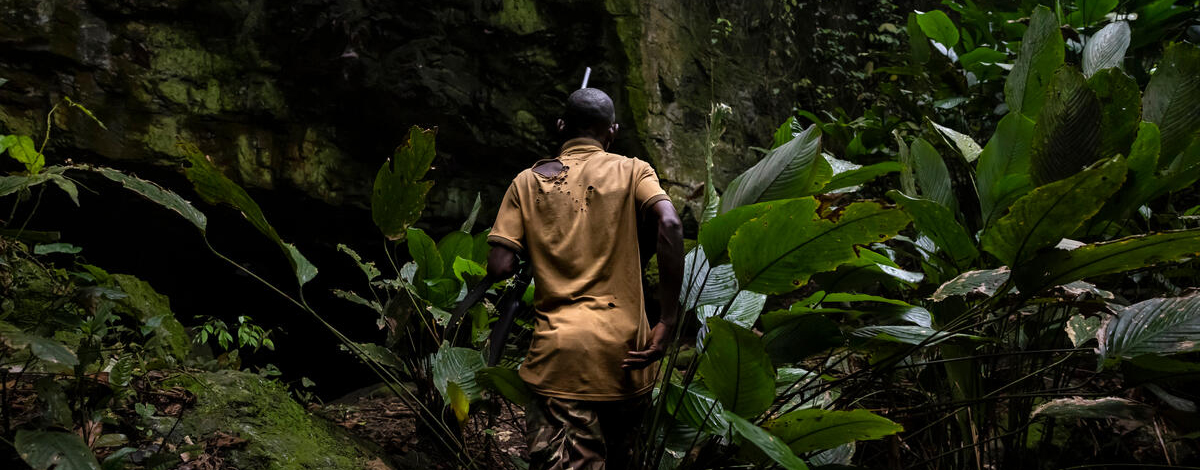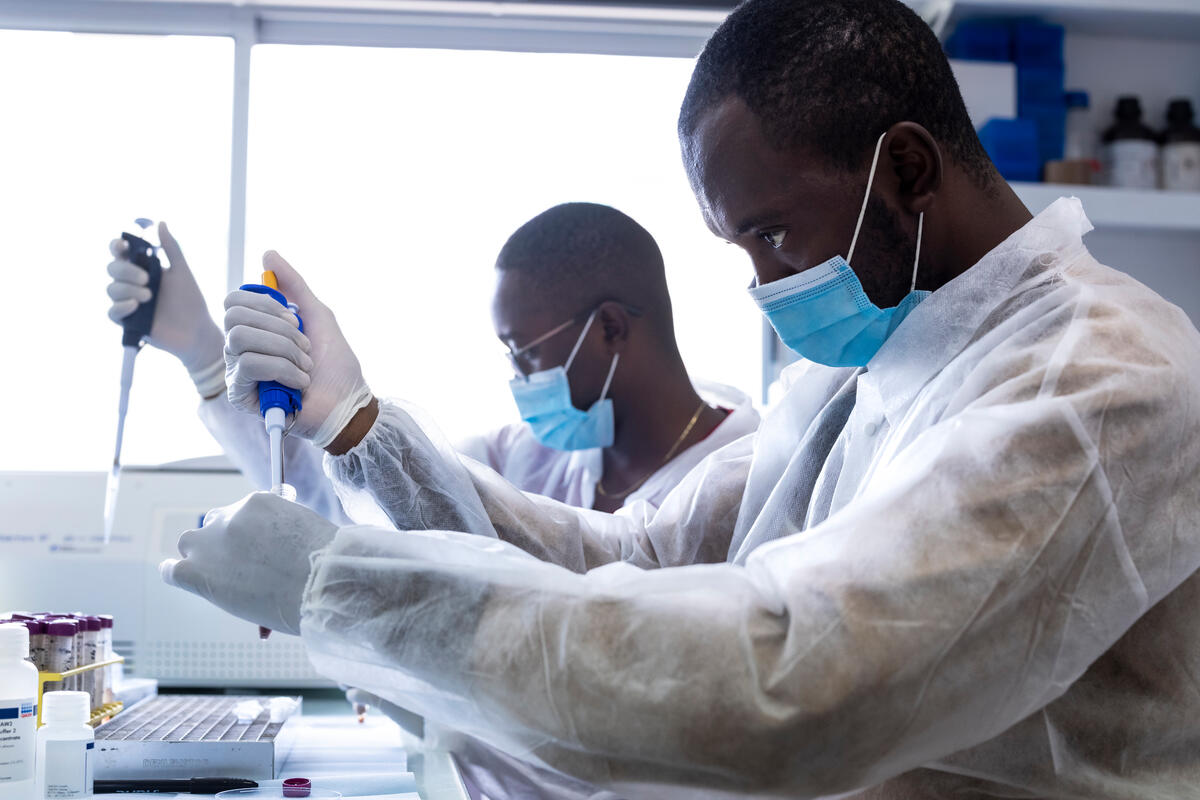
How wildlife communities are protecting global health
Deep in the rainforests of Gabon, a hunter returns from his usual morning walk through the forest trails when he notices something troubling. An antelope he encounters near a familiar watering spot shows unusual lesions on its skin, and over the past few weeks, several animals in the area seem lethargic and disoriented. In the past, such observations might have been dismissed as natural occurrences. Today, this hunter is part of an innovative surveillance network that could prevent the next pandemic.
This transformation illustrates the power of the One Health approach – a recognition that human, animal, plant, and environmental health are fundamentally interconnected. At the heart of this movement is the Sustainable Wildlife Management Programme (SWMP), which is helping transform traditional conservation and health practices.
The hidden crisis in our forests
Every year, millions of people worldwide depend on wild animals for their protein, income, and cultural identity. In rural communities across Africa, Asia, and Latin America, wild meat isn't just food – it's often the difference between nutrition and hunger. A single successful hunt can feed a family for days or provide enough income to send children to school.
But this ancient relationship is under strain. Demand for wild meat in many rapidly expanding towns and cities in Central Africa is driving unsustainable levels of hunting. The result is a perfect storm of ecological pressures and health risks while jeopardizing rural development.
Overhunting for meat has already pushed countless species toward extinction, including rarer species of duikers or antelopes that go unnoticed, concealed among the many game species, and from which often little is known. As hunters face increasing pressure to provide wild meat for their communities, they may handle or consume animals showing signs of illness, while the clandestine nature of their activities and lack of knowledge about disease risks prevents proper reporting of unusual animal behaviours or deaths. Meanwhile, degraded ecosystems force wildlife into closer contact with domestic animals and humans, creating ideal conditions for diseases to jump between species.
The COVID-19 pandemic starkly reminded us what happens when this delicate balance breaks down. But for communities living at the wildlife-human interface, the threat of zoonotic disease isn't a future concern – it's a daily reality.
.jpg?sfvrsn=b425ba11_0)
Beyond bans: A smarter approach
Traditional conservation efforts often default to prohibition: ban hunting, ban trade and ban consumption. Yet decades of experience show that such blanket bans typically fail. They drive trade underground and criminalize communities whose survival depends on wildlife, often pushing them deeper into poverty while doing little to protect animals.
The Sustainable Wildlife Management Programme is testing and advocating different approaches that are centred around the rights and needs of rural communities based on three principles:
Participatory management puts hunters, local communities, and indigenous groups – who possess the most intimate knowledge of wildlife – at the centre of decision-making rather than excluding them.
Rights-based approach by strengthening community rights over wildlife management and helping ensure that conservation efforts don't compromise food security or livelihoods by understanding local value chains and addressing the needs of vulnerable communities.
Integrated "bush to fork" strategy addresses the entire wildlife value chain, from hunting practices in remote forests to consumption patterns in urban markets.
Turning hunters into health guardians
One of the most innovative aspects of SWMP is its development of community-based surveillance systems that tap into the expertise of people who know wildlife best. Hunters, livestock keepers, and traditional healers possess encyclopedic knowledge of animal behaviour, disease symptoms, and environmental changes that no outside expert can match.
The Gabon project demonstrated this approach in action. Rather than training external monitors, the initiative worked with hunter communities to develop their own surveillance systems. Hunters shared their observations about animal diseases, participated directly in designing surveillance protocols, and received training in disease surveillance across wildlife, livestock, and human populations.
This isn't just about disease detection – it's about empowerment. Local communities develop their own tools to protect their health and environment, creating ownership and sustainability that external programs rarely achieve. The success in Gabon was so impressive that the country's Ministry of Health is now scaling up the approach nationwide. FAO continues to support these efforts through the implementation of a project which enhances early warning and surveillance capacities at the human–animal–plant–environment interface by modernizing digital reporting tools, and by strengthening biosecurity systems through community-based, One Health approaches.
The effectiveness of community-based surveillance systems is demonstrated by real-world results. During the second year of implementation, hunters reported 11 early detections of unusual animal behaviour or deaths. Ten of these cases warranted further investigation, with samples collected in the field and analyzed at the Centre International de Recherches Médicales de Franceville (CIRMF) laboratory. One sample tested positive for rabies in a mandrill that had been shot by a hunter who recognized abnormal behaviour and body condition in the animal. Despite mandrills being a fully protected species under Gabonese law, the hunter reported the kill without moving the carcass, demonstrating the trust built within the alert system. Following the positive rabies diagnosis, the Ministry of Health organized anti-rabies vaccination campaigns for surrounding communities. This case exemplifies a successful One Health response, involving hunters, local authorities, research laboratories, communities, and health ministries in coordinated action. Crucially, without the trust fostered by the surveillance system, this incident involving a protected species would likely have remained hidden, with the potentially infected meat consumed by the community.

Building bridges across sectors
The programme's greatest strength is its ability to break down the silos that traditionally separate health, agriculture, environment, and development sectors. It brings these sectors together around shared goals: protecting human health, conserving biodiversity, and supporting sustainable livelihoods.
The "bush to fork" approach recognizes that challenges are interconnected. Upstream interventions focus on sustainable hunting practices and habitat conservation. Downstream interventions address processing, transport, and consumption practices while promoting alternative protein sources where appropriate.
This integration has attracted significant international support, including a Euro 25 million contribution from the European Union to expand the programme's reach through to 2029.
From crisis to opportunity
The FAO-led Sustainable Wildlife Management Programme represents more than just a conservation success story. It is also a glimpse of what's possible when we move beyond simplistic solutions to embrace the complexity of human-wildlife relationships. By empowering communities, and by addressing health, environmental, and social challenges simultaneously, the programme is piloting and promoting new models for conservation in the 21st century.
The hunter in Gabon who reports unusual disease symptoms isn't just protecting his own community – he's contributing to global health security. This is the promise of the One Health approach: recognizing that human, animal, and environmental health are not competing priorities but shared responsibilities that can only be addressed together.
